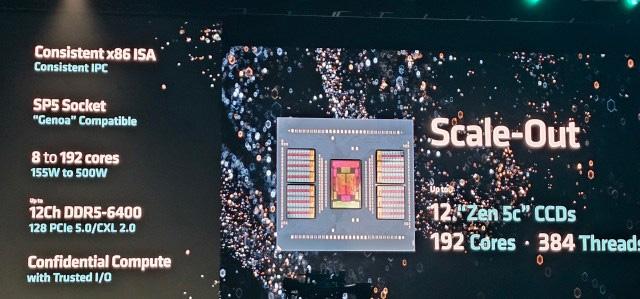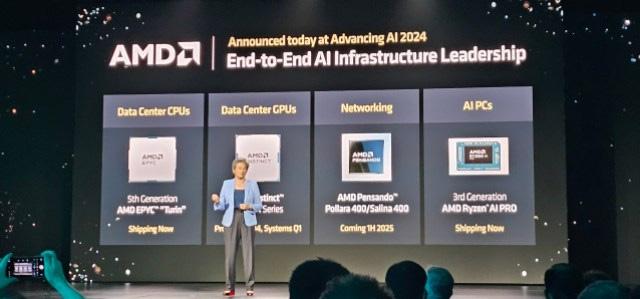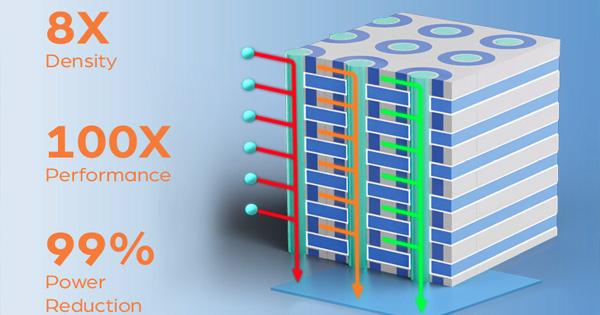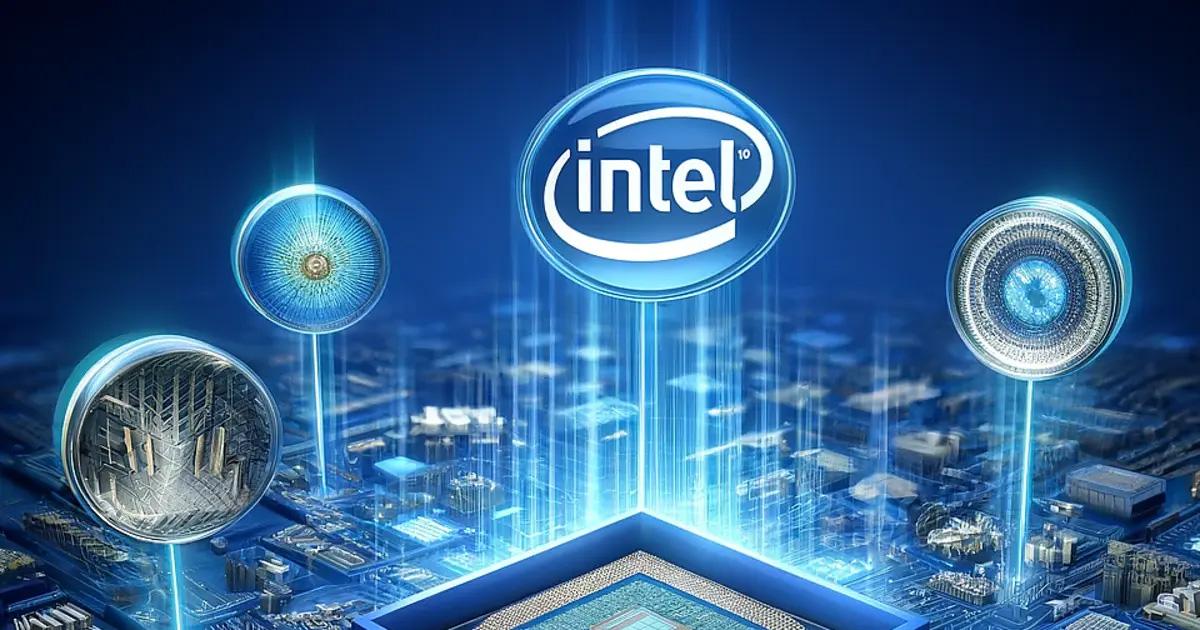
AMD Focuses on the Enterprise for AI
Since introducing the Zen processor architecture in 2017, AMD has held an annual fall event in San Francisco to provide details on the latest Epyc server processors. While the title and content of the event have changed over the years, one thing has remained consistent–AMD continues to set goals and meet or exceed those goals. That first event marked a turning point for the company as it transitioned from a company that notoriously squandered opportunities to one that has become an industry leader and synonymous with flawless execution of its product roadmaps. And for those unaware, it marked the rise of one of the top CEOs in the tech industry, Dr. Lisa Su.
Tirias Research has had the opportunity to participate in this annual event since its inception. This year, the theme was “Advancing AI”. Understanding how the event has changed over the years provides just as much insight as the new product announcements. The first significant change is in AMD’s market position. In 2017, AMD had practically no market share for x86 server CPUs. According to Mercury Research, AMD now boasts just shy of a quarter of the market in unit shipments and over a third in revenue. More importantly, AMD continues to show momentum in server CPU growth. The company has also demonstrated market share gains in PCs and other product segments, but nothing as drastic as in servers.
The second significant change is in the breadth of products AMD offers for data centers. What started with Epyc processors has expanded to include the Instinct GPUs for AI acceleration, and Pensando DPUs. AMD extended the event this year into a broader enterprise event by including a new series of Ryzen AI PC SoCs (systems-on-chips). The company stopped short of including the Ryzen Pro GPUs and Threadripper workstation CPUs because they were not introducing products in these categories. Still, they are worth noting because AMD is competitive in these areas, especially in workstation CPUs, where Threadripper has become the clear industry leader.
The 2024-2025 lineup
The announcements this year included the Epyc 9005 family of server processors codenamed Turin and based on the latest Zen 5 architecture. Like the Epyc 9004 series, there will be many products in the family targeting different classes of workloads. Note that they may not completely align with the Epyc 9004 series strictly because of specific demands for various configurations. Compared to the Zen 4 generation, the new Epyc CPUs increase the maximum core count by 50% while only increasing TDP by 25%. Combined with improvements in process and architecture efficiency and memory performance, the 9005 series achieves a 17% increase in IPC (instruction per clock) and a significant increase in both AI and HPC workloads, according to AMD.

Overview of the Xen 5 Epyc CPUs (Source: TIRIAS Research)
AMD also announced the upcoming availability of the Instinct MI325X GPU for AI acceleration, offering increased memory bandwidth and capacity. The MI325X follows the MI300X, the fastest-ramping product AMD has ever had with rapid adoption by US government research labs and hyperscalers. AMD also discussed the next two generations in the series: the MI350X, which will be introduced in mid-2025, and the MI400X, which will be introduced in 2026. The roadmap marked AMDs commitment to the annual introduction of new AI accelerators.
The third and most exciting announcement was the availability of two new Pensando products: the Salina 400 DPU for front-end networking (system-to-system) and the Pollara 400 Ultra Ethernet NIC (Network Interface Card) for back-end networking (GPU-to-GPU). Both target up to 400MB/s for ultra-fast, low-latency data transfers. Additionally, the Pollara 400 uses AI to intelligently route data traffic to improve overall system performance and efficiency. It is also the first announced product supporting the upcoming Ultra Ethernet Consortium (UEC) 1.0 specification.
The final announcement from the event is the Ryzen AI Pro 300 series SoCs for enterprise PCs. The Pro series features similar specifications to the consumer Ryzen AI 300 series but with enhanced security and manageability features, Neural Processing Unit (NPU) performance of up to 55 TOPS on specific HP product SKUs and up to 50 TOPS on other OEM SKUs.
 Dr. Su discussing excretory leadership (Source: TIRIAS Research)
Dr. Su discussing excretory leadership (Source: TIRIAS Research)
Final thoughts
It was impressive to see OEMs not only supporting the product launch but also announcing new products, primarily based on the new Epyc 9005 CPUs, at the AMD event. However, the most valuable part of this evolving event is that it demonstrates AMD’s continued execution with an annual cadence of products for the data center and the rest of the enterprise, which in turn helps provide long-term stability and assurance to enterprise customers, thus helping AMD build on its enterprise momentum. The days of wondering if AMD will execute are long gone. Now, we look forward to the new generation of products coming next fall.




